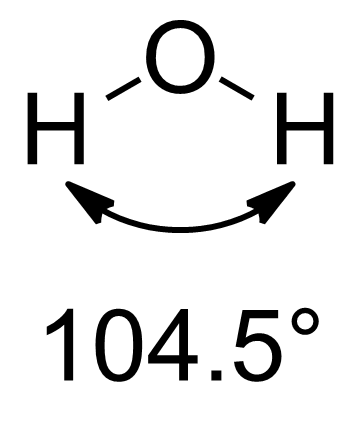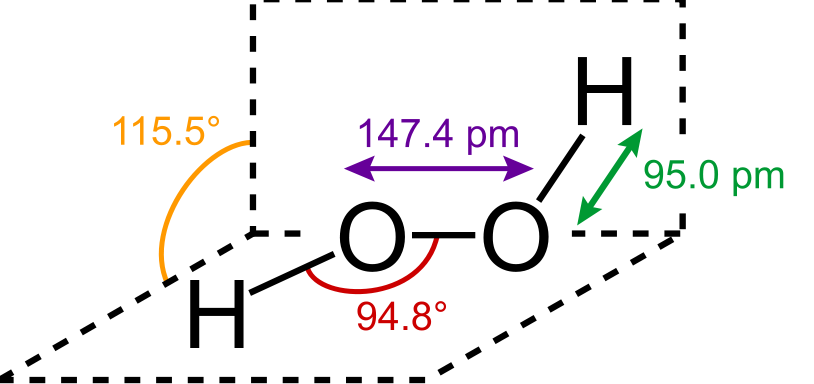
The O−H bond length in
Answer
417.3k+ views
Hint:
The most basic form of peroxide is hydrogen peroxide (oxygen-oxygen single bond). It's a colourless substance that's used in aqueous solutions to keep things clean. It is used as a disinfectant as well as a bleaching agent. In rocketry, concentrated hydrogen peroxide is used as a propellant because it is a highly reactive oxygen species.
Complete answer:
The most basic form of peroxide is hydrogen peroxide (oxygen-oxygen single bond). It's a colourless substance that's used in aqueous solutions to keep things clean. It is used as a disinfectant as well as a bleaching agent. In rocketry, concentrated hydrogen peroxide is used as a propellant because it is a highly reactive oxygen species.
The distance between the nuclei of two chemically bound atoms in a molecule is measured by bond length. It is roughly proportional to the number of the two bonded atoms' covalent radii. Bond length is inversely proportional to bond order in covalent bonds; higher bond orders result in stronger bonds, which are followed by stronger forces of attraction that tie the atoms together. These powerful powers of attraction result in short bonds.
Hydrogen peroxide has a non-planar composition. With O – O flips,


Hence Option A < x
Note:
Hydrogen peroxide has a non-planar composition. With O – O flips,
The most basic form of peroxide is hydrogen peroxide (oxygen-oxygen single bond). It's a colourless substance that's used in aqueous solutions to keep things clean. It is used as a disinfectant as well as a bleaching agent. In rocketry, concentrated hydrogen peroxide is used as a propellant because it is a highly reactive oxygen species.
Complete answer:
The most basic form of peroxide is hydrogen peroxide (oxygen-oxygen single bond). It's a colourless substance that's used in aqueous solutions to keep things clean. It is used as a disinfectant as well as a bleaching agent. In rocketry, concentrated hydrogen peroxide is used as a propellant because it is a highly reactive oxygen species.
The distance between the nuclei of two chemically bound atoms in a molecule is measured by bond length. It is roughly proportional to the number of the two bonded atoms' covalent radii. Bond length is inversely proportional to bond order in covalent bonds; higher bond orders result in stronger bonds, which are followed by stronger forces of attraction that tie the atoms together. These powerful powers of attraction result in short bonds.
Hydrogen peroxide has a non-planar composition. With O – O flips,


Hence Option A < x
Note:
Hydrogen peroxide has a non-planar composition. With O – O flips,
Recently Updated Pages
Master Class 9 General Knowledge: Engaging Questions & Answers for Success

Master Class 9 English: Engaging Questions & Answers for Success

Master Class 9 Science: Engaging Questions & Answers for Success

Master Class 9 Social Science: Engaging Questions & Answers for Success

Master Class 9 Maths: Engaging Questions & Answers for Success

Class 9 Question and Answer - Your Ultimate Solutions Guide

Trending doubts
State and prove Bernoullis theorem class 11 physics CBSE

What are Quantum numbers Explain the quantum number class 11 chemistry CBSE

Who built the Grand Trunk Road AChandragupta Maurya class 11 social science CBSE

1 ton equals to A 100 kg B 1000 kg C 10 kg D 10000 class 11 physics CBSE

State the laws of reflection of light

One Metric ton is equal to kg A 10000 B 1000 C 100 class 11 physics CBSE




